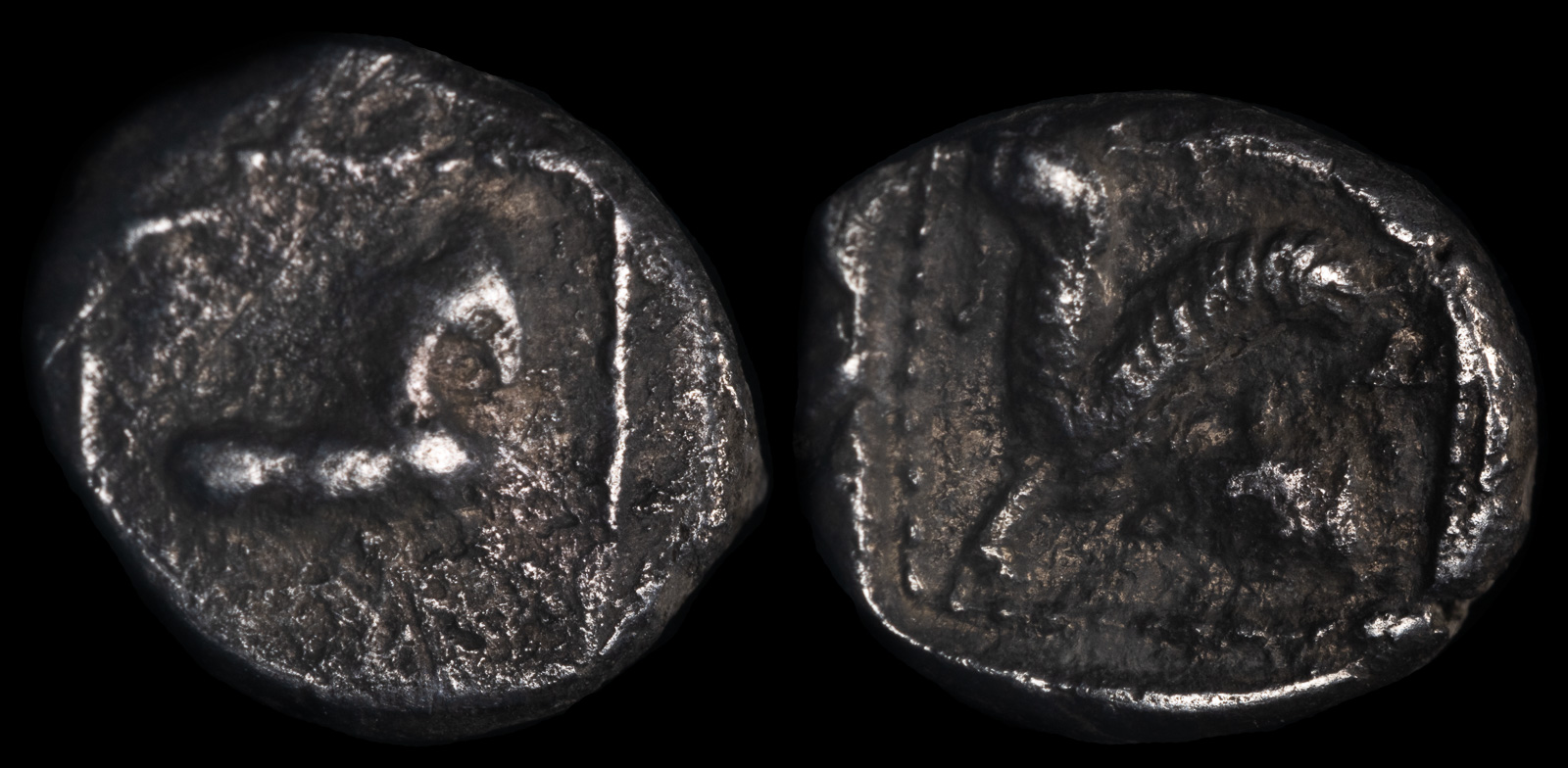
Samaria, “Middle Levantine” Series
Circa 375-333 BCE
Minted by Delayah(?)
AR Obol 9mm, 0.81 g, 2h
Bridled horse stepping right; [DY (in Aramaic) above]; all within dotted square /
Winged sphinx, with head of Persian king, seated right; Y[D] (in Aramaic) above; all within dotted square.
Meshorer & Qedar 27; Sofaer 118–20
Things started cordially enough between Alexander the Great and the Samaritans. When his army arrived in the area, they surrendered to him. He placed Andromachos there to manage things, then continued on his way destroying whatever didn’t submit to him. Next up was Gaza.
However, for some reason the Samaritans decided to revolt. They killed Andromachos and cast away the Macedonians. This wasn’t a good idea, especially since Alexander‘s army was still not far away. Upon hearing the news, Alexander turned around, and this wasting of his time made him most unhappy.
He destroyed Samaria. In order to avoid the inevitable bloodbath of a siege or field encounter, roughly three hundred nobles hunkered down in a cave. Perhaps the theory was this would limit the Macedonian soldiers’ effectiveness due to the narrow opening. It was a poor idea.
Alexander‘s general, rather than losing men in the encounter, just lit a fire at the opening and asphyxiated every one of them. What was interesting, though, is what happened next: nothing.
Not until 1962 were the remains found. Not only were their skeletons uncovered, but they had brought everything from jewelry to documents along with them. The finds were fascinating, and shed a lot of light into Samaritan culture at the time.
Although previously it was believed Samaritans split off from the Jewish faith earlier, the documents prove that this schism must have taken place a hundred or more years later. They were also hellenized, as shown by marriage contracts between Samaritans and Greeks and by their jewelry.

SAMARIA, Samarian-signed Series
Circa 375-333 BCE
AR Obol 8.5mm, 0.63 g, 7h
Forepart of lion crouching right, head facing / Bearded head of male left; ŠMRY[N] (in Aramaic) to right.
Meshorer & Qedar 83; Sofaer 59
The above coin actually contains the name ‘Samaria’, though it is mostly off flan.
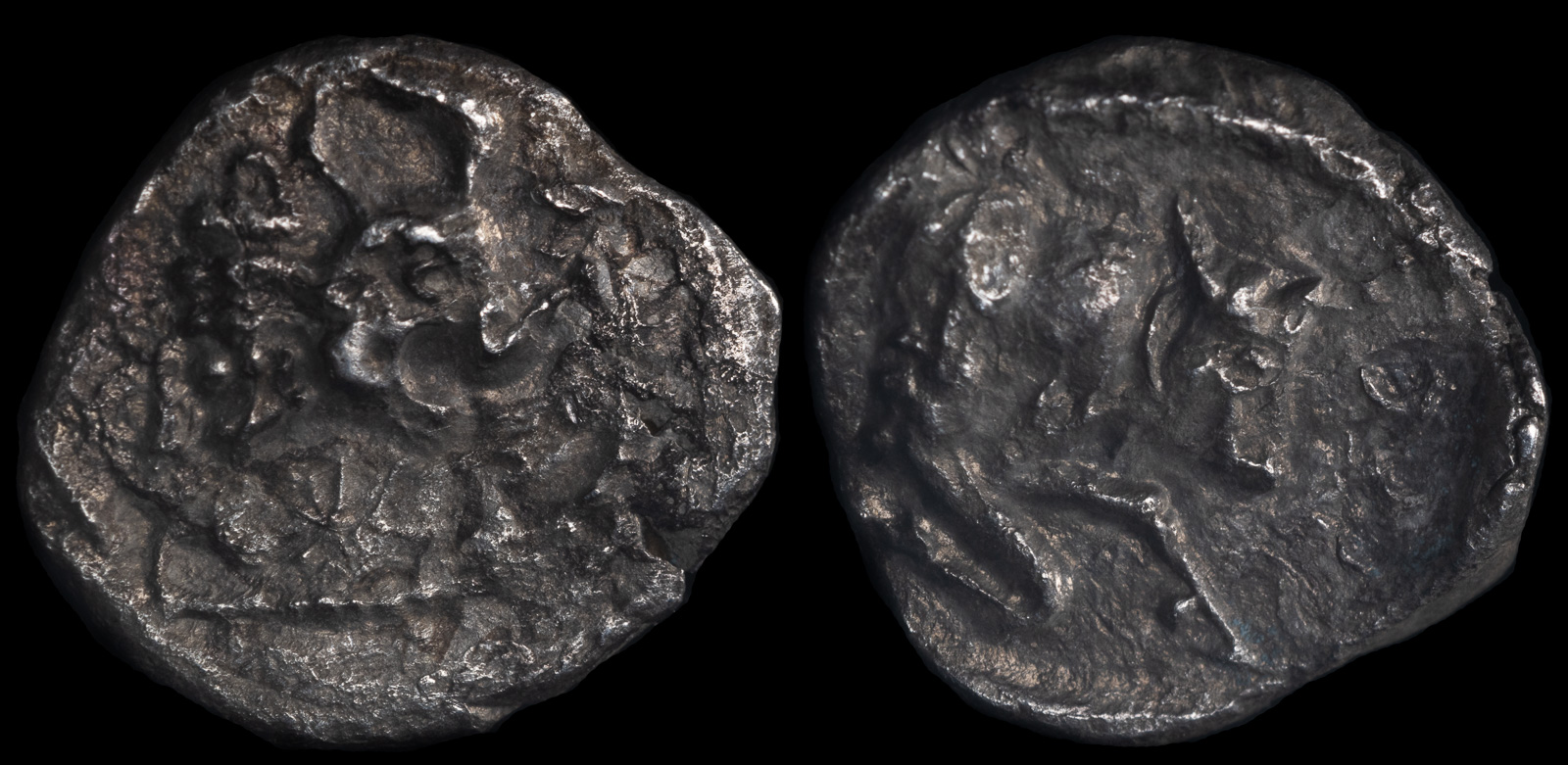
Samaria
Circa 375-333 BCE
AR Obol 0.64g, 8mm
Obv.: head of horned creature right.
Rev.: forepart of bull right.
Meshorer & Qedar 159
This one interestingly contains an image and what we believe to be an inscription of Herakles.
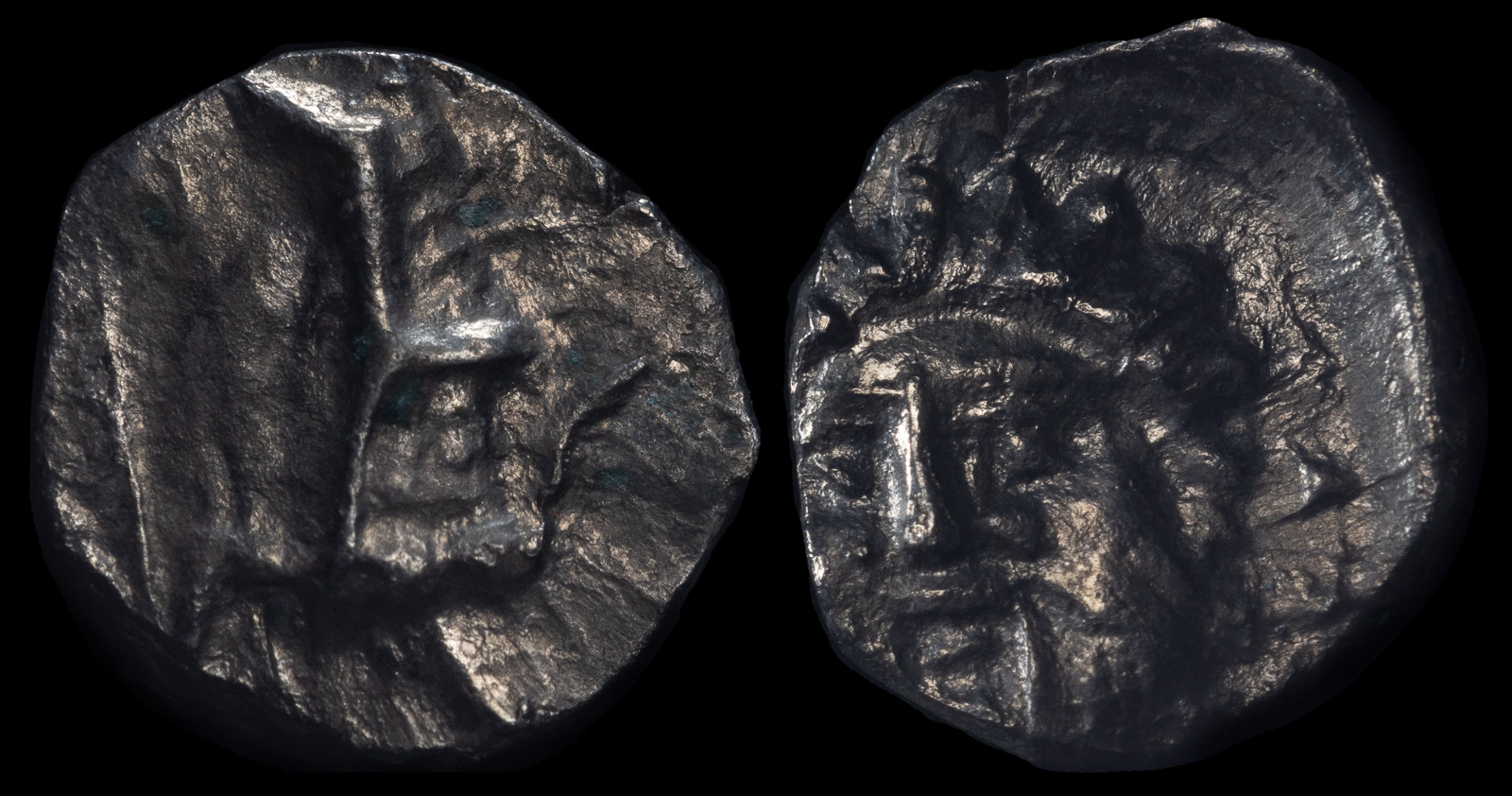
Samaria, ‘Middle Levantine’ Series
Circa 375-333 BCE
Obol AR 9 mm, 0.72 g, 11 h
Draped male figure standing front, head to left, holding bird (?) in his right hand and scepter in his left; to right, 𐤏𐤏 (” in Punic).
Rev. Bearded facing male head; in field to right, KΛEYC
Meshorer & Qedar 114. Sofaer 135-136
Ex Canaan Collection, Leu Web Auction 2019
This coin contains an inscription that is difficult to decipher. The below were issued by various individuals we believe to be governors.
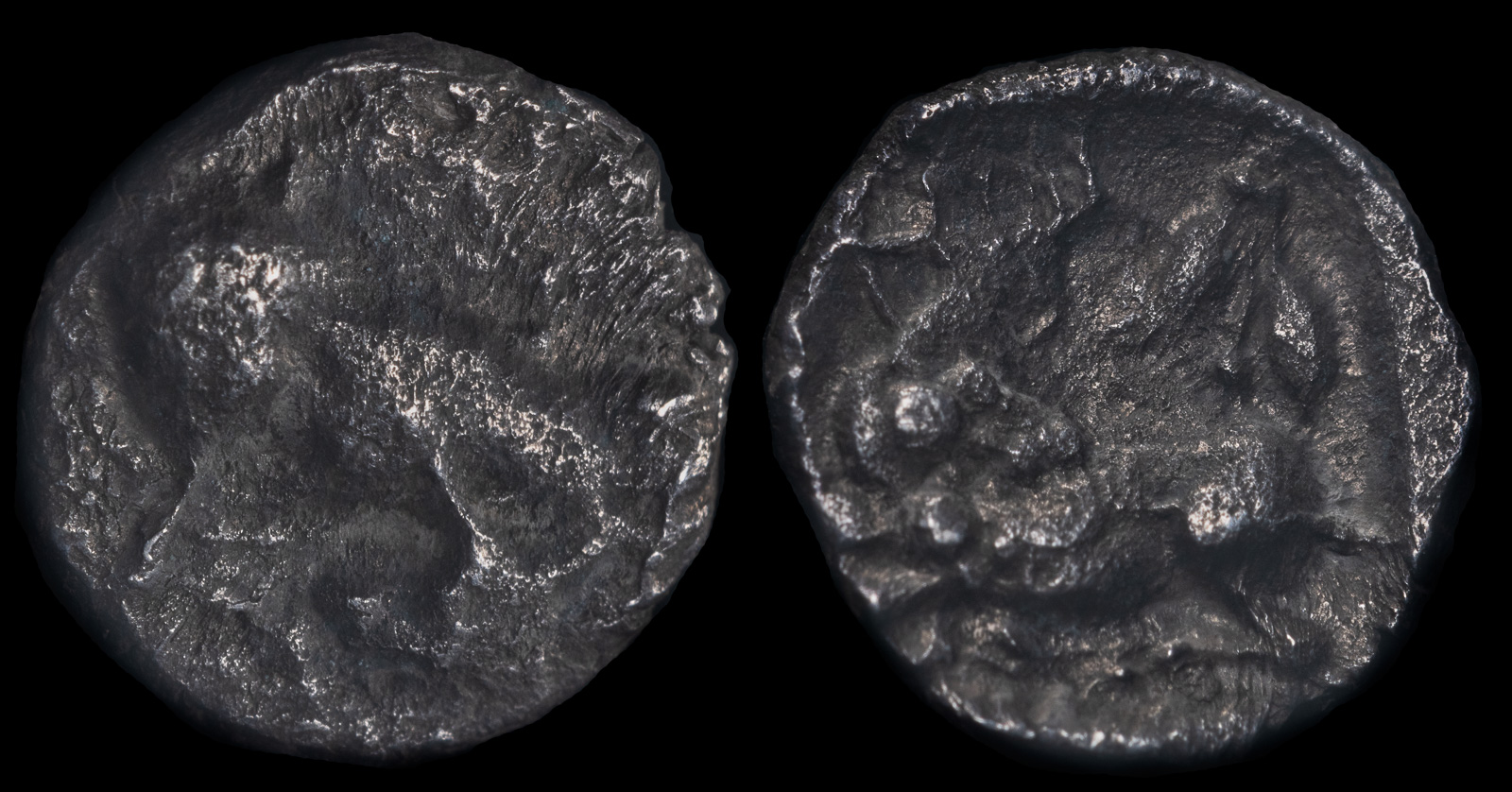
Samaria. “Middle Levantine” Series
Circa 375-333 BCE
AR Obol 0.68g, 9mm
Obv.: cow standing right, head left, suckling calf.
Rev.: stag recumbent left, head right; olive spray to right. Aramaic SL above.
Meshorer & Qedar 148; Sofaer 229
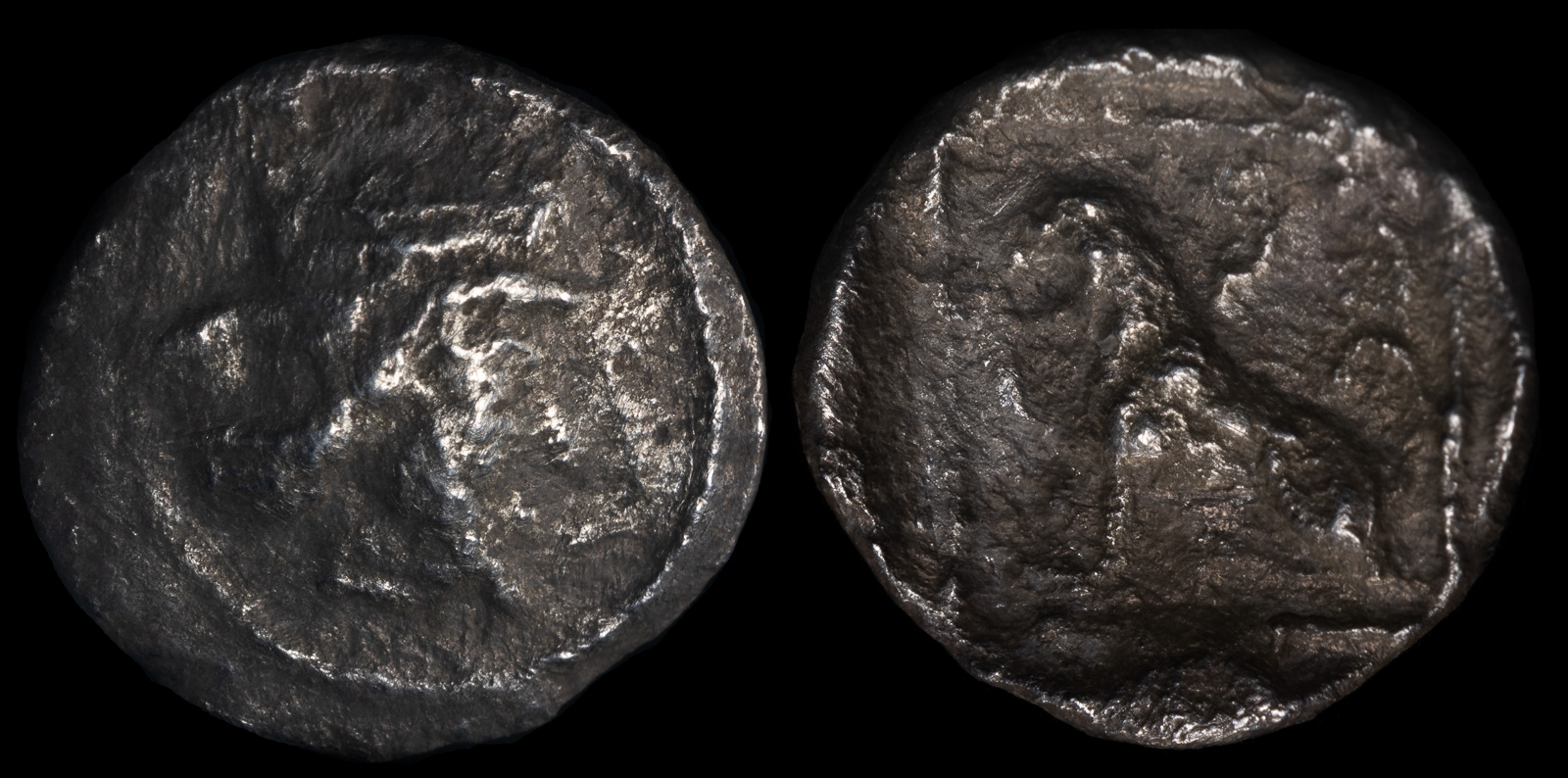
Samaria, “Middle Levantine” Series
Minted by Sanballat(?)
Circa 375-333 BCE
AR Obol 9mm, 0.47 g, 7h
Bearded head of Persian King right /
Lion seated left, raising right forepaw; SN (in Aramaic) above; all in dotted square within incuse square.
Meshorer & Qedar 52; Sofaer 70

Samaria, “Middle Levantine” Series
Circa 375-333 BCE
Minted by Hananiyah(?)
AR Obol 8mm, 0.59 g, 5h
Imitating Athens. Helmeted head of Athena right /
Owl standing right, head facing; olive spray to left, [H]YNNḤ (in retrograde Aramaic) to lower right.
Meshorer & Qedar 38; Sofaer 111; Triton XIII, lot 1343 (same rev. die)

Samaria, ‘Middle Levantine’ Series
Bedyehibel (or Beruhibel)
Circa 375-333 BCE
Hemiobol AR 10 mm, 0.35 g, 5 h
The Persian Great King seated to right, holding flower in his right hand and scepter in his left.
Rev. The Persian Great King standing right, raising his right hand and holding scepter in his left; behind to left, 𐡁𐡓𐡉𐡇𐡁𐡋 (‘bdyhbl’ in Aramaic).
Meshorer & Qedar 14. Sofaer 91-92
Ex Canaan Collection, Leu Web Auction 2020
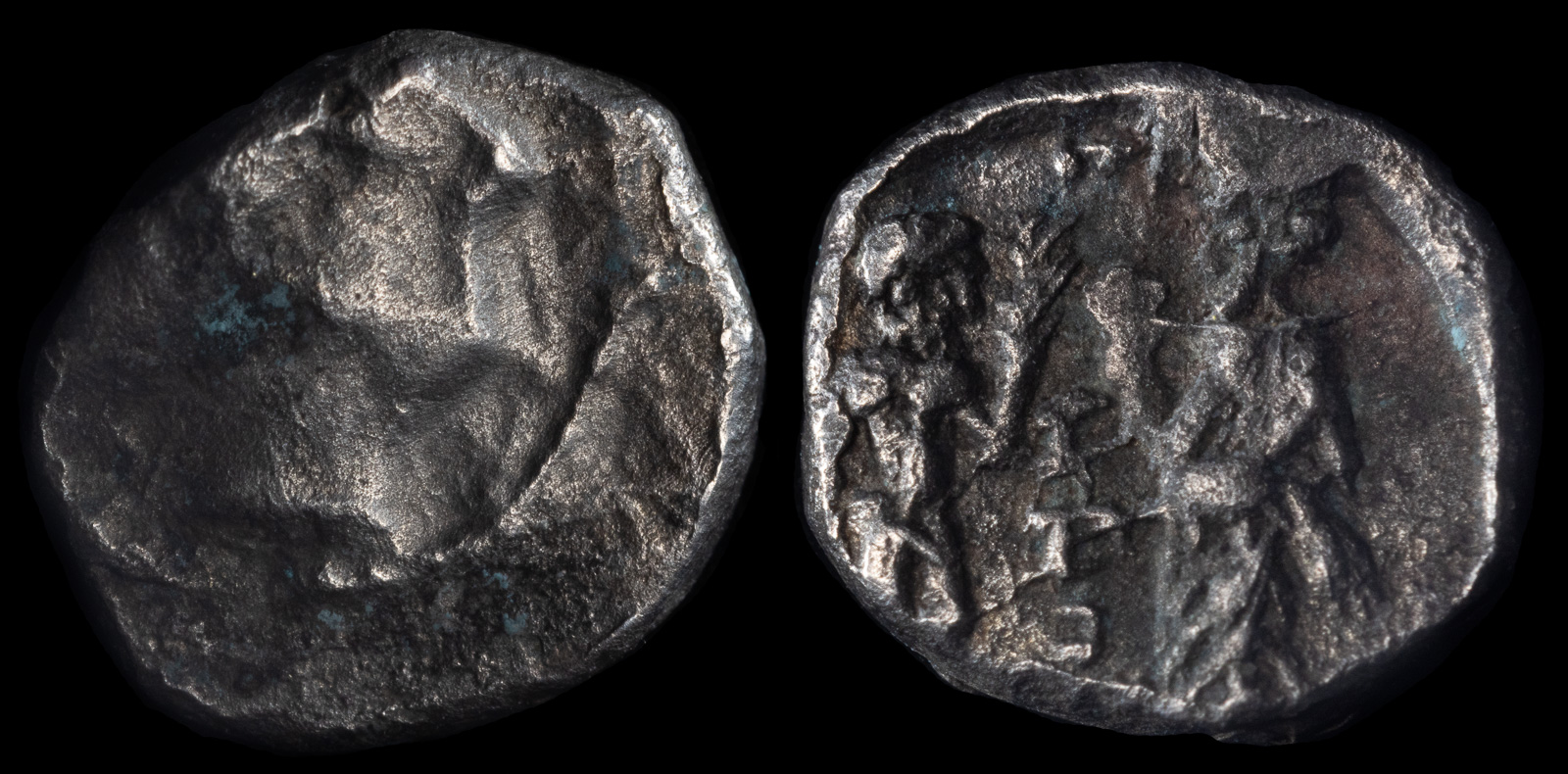
Samaria, ‘Middle Levantine’ Series
Jerobeam
Circa 375-333 BCE
Obol AR 8 mm, 0.73 g, 7 h
Female head to right.
Rev. Two male figures standing facing each other, the one on the left holding a branch; between them, 𐡉𐡓𐡁𐡏𐡌 (‘yrb’m’ in Aramaic).
Meshorer & Qedar 44. Sofaer 104
Ex Canaan Collection, Leu Web Auction 2020
Omri defeats the usurper Zimri and becomes king of Israel, with its capital at Samaria.
Samaria becomes the capital of the Kingdom of Israel.
Approximate construction of the first palace at Samaria.
Ahab, son of Omri, becomes king of Israel, with its capital at Samaria.
Death of the unpopular king Ahab. His son Ahaziah takes the throne in Samaria and continues his ways.
Ahaziah dies in Samaria after falling from a roof. Jehoram becomes king of Israel.
Jehoram dies from an arrow wound. Jehu becomes king of Israel, with its capital at Samaria.
Death of Jehu in Samaria. His son Jehoahaz becomes King of Israel.
Death of Jehoahaz, King of Israel. Jehoash takes the throne in Samaria.
Death of Jehoash. Jeroboam II becomes king at Samaria.
A major earthquake damages Samaria.
Death of Jeroboam II at Samaria. Zechariah becomes King of Israel.
Zechariah rules for six months before Shallum kills him and takes the throne in Samaria.
Shallum is executed by Menahem, who takes the throne at Samaria.
Death of Menahem at Samaria. His son Pekahiah becomes King of Israel.
Pekahiah is assassinated by one of his chief military officers, Pekah, who takes the throne in Samaria as King of Israel.
Pekah is assassinated by Hoshea, a captain in his army, in Samaria. Hoshea becomes the last King of Israel.
Samaria is captured by the Neo-Assyrian Empire.
Samaria is destroyed by Alexander III.
John Hyrcanus destroys Samaria.
Herod I rebuilds Samaria.